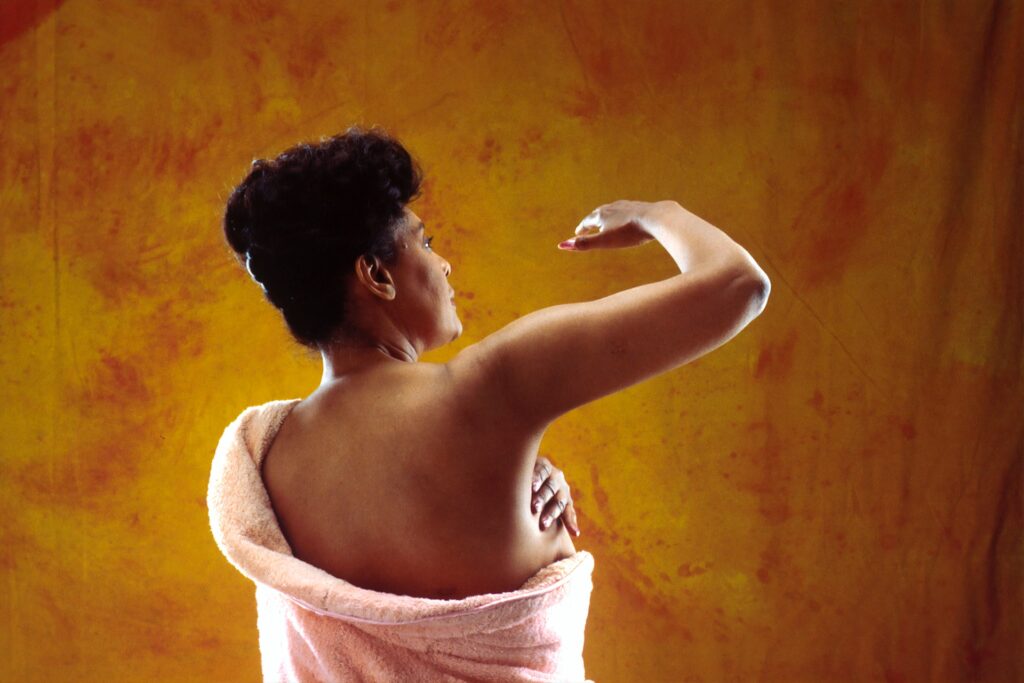How to Perform a Self-Breast Examination

According to Johns Hopkins Medical Center, “40 percent of diagnosed breast cancers are detected by women who feel a lump.” Establishing a regular breast exam routine is very important and can help detect breast cancer early. Women should do a self-breast exam once every month. Consistent breast exams can help detect the presence of a lump, and also alert you to anything that may not feel or look right. However, they do not replace screenings or exams, so make sure to continue following recommended guidelines for an annual mammogram and doctor visits. The more often you do a self-breast examination, the more familiar you will be with your body, and the quicker you’ll notice anything different. If you do discover anything unusual, always report it to your doctor.
A self-breast exam only takes a few minutes. There are three ways you can perform a self-breast examination: in the shower, in front of a mirror or lying down. Remove all articles of clothing above the waist before you start. Choose the scenario with which you are most comfortable.*
In the Shower
Raise your arm and place your hand on the back of your head. With the three middle fingers together, press down on the entire breast and armpit area. Run your fingers around the area with light, medium, and firm pressure. Repeat this every month feeling for any lump, hardened areas, or any other breast changes.
In Front of a Mirror
With both arms down by your sides, visually inspect your breasts looking for anything that might be out of the ordinary.
Next, raise your arms high above your head. Look for any exterior, physical changes in the nipples and surrounding skin area. Next, place your hands on your hips and press your hands down firmly on your hips to flex the chest muscles. Look for anything unusual. Note that the left and right breasts will not necessarily look exactly the same.
Lying Down
When lying down, place a pillow under your right shoulder and your right arm behind your head. Now using the left hand, keep your fingers pressed together as you move them around the right breast making sure to go over the entire breast area and armpit. Start with light pressure, then medium, and finally apply firm pressure. Check for discharge and lumps. Repeat the process on the left breast.
If you do find a lump or discover anything unusual, make an appointment with your doctor. A lump does not immediately mean cancer, but you should certainly get it looked at by a doctor.
*Adapted from the National Breast Cancer Foundation, Inc. website.

Leave a Reply